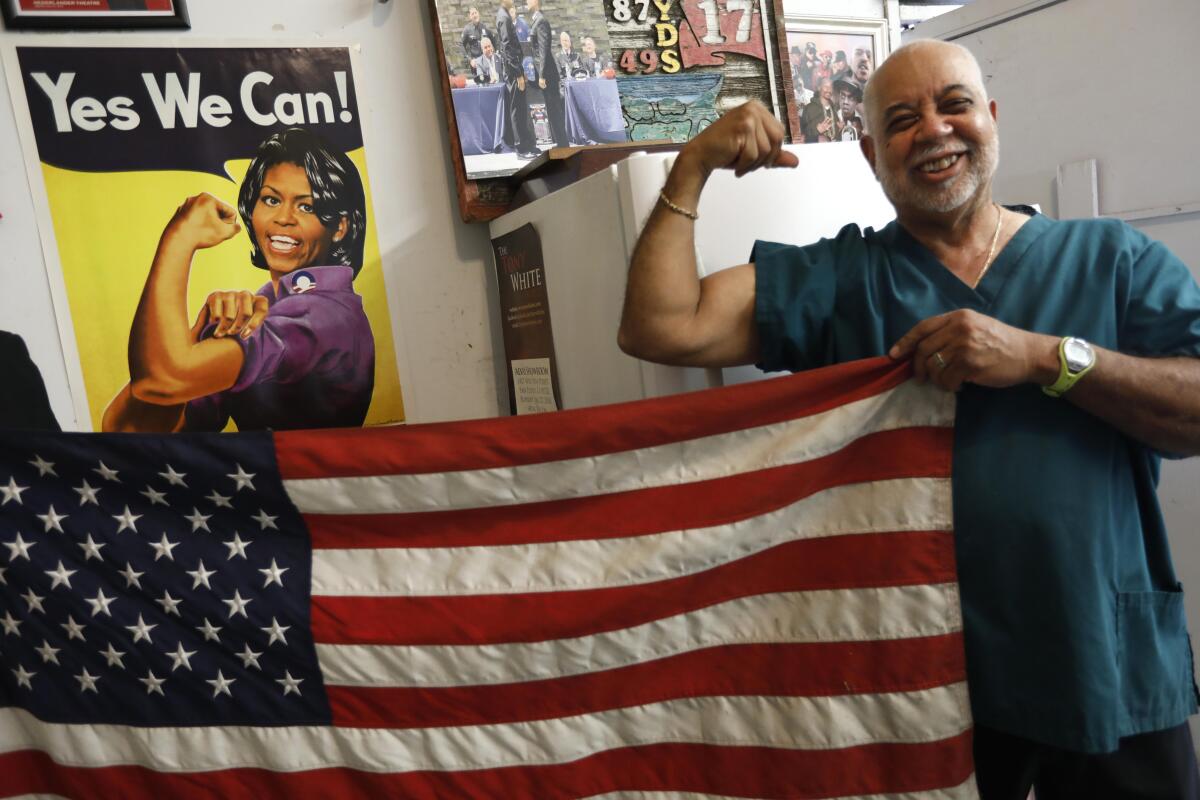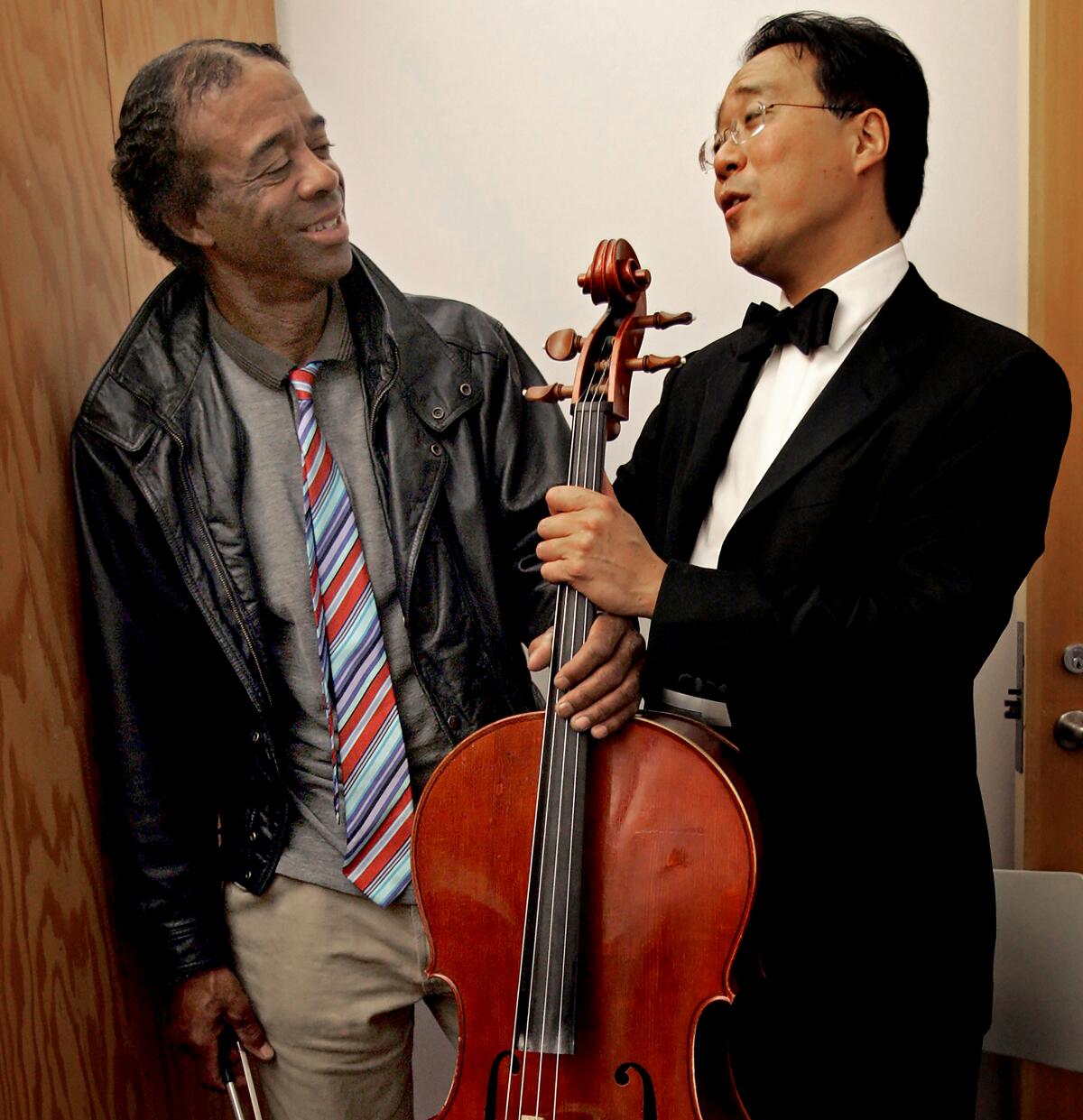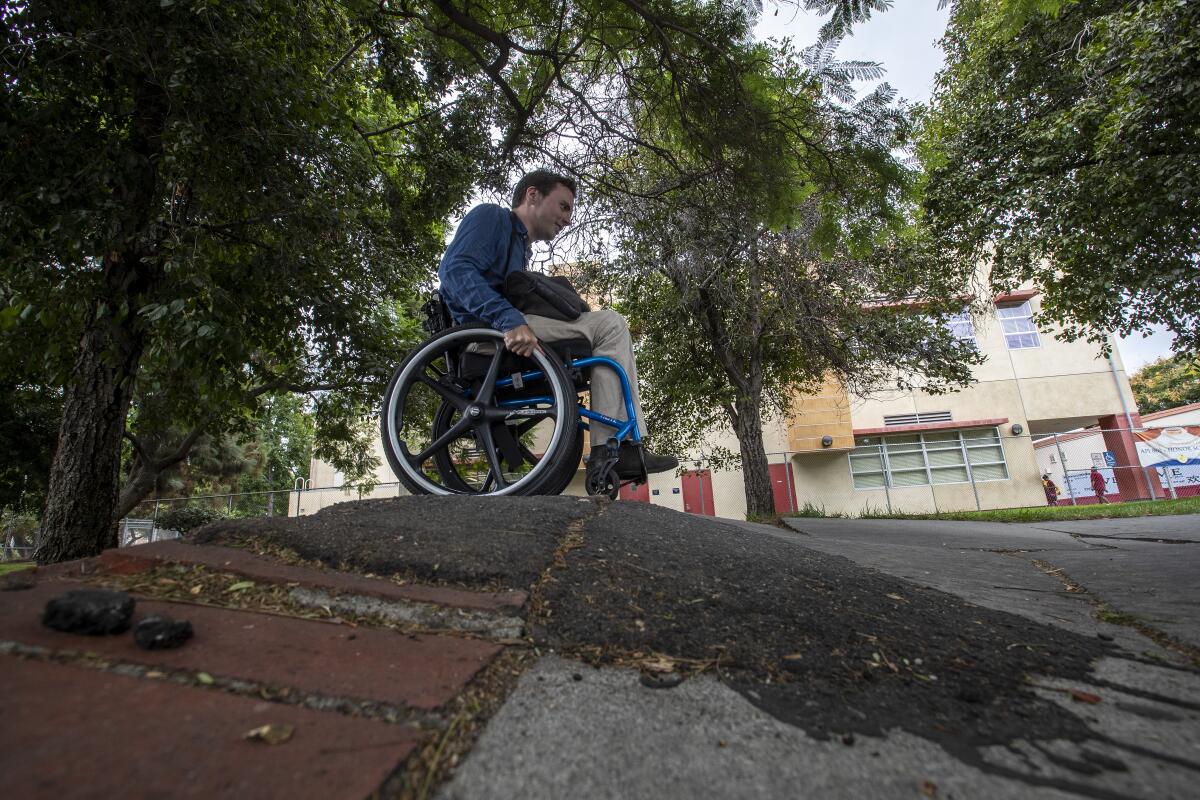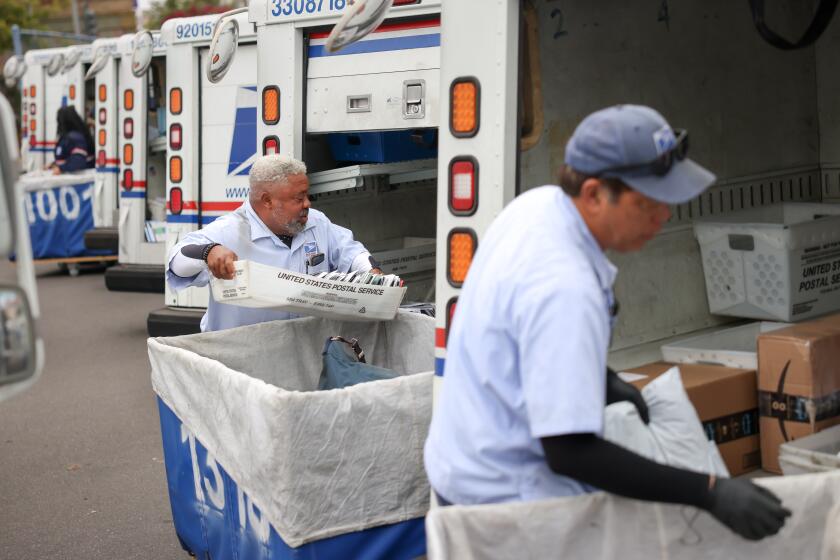Half a century on the beat, and thank you very much

- Share via
The Bard of Los Angeles was waiting for an elevator when I arrived at the office one day in 2002. Columnist Al Martinez and I greeted each other, and with a mixture of pride and disbelief, he shared a milestone.
“This is it,” he said. “Fifty years in the business.”
Martinez was in his early 70s and said he had no intention of slowing down. You’d have needed a tranquilizer gun to keep him from chasing after the next story, and the next, and he was still telling stories until his death in 2015.
Steve Lopez
Steve Lopez is a California native who has been a Los Angeles Times columnist since 2001. He has won more than a dozen national journalism awards and is a four-time Pulitzer finalist.
I was a full generation behind him, and had trouble imagining myself at his age, still on the beat.
But time did what it does.
It vanished.
Now I’m in my early 70s, and I’m stealing Martinez’s line.
This is it. Fifty years in the business.


Newspapers have soared and sputtered in that time, rising to hero status half a century ago for taking down a crooked president, only to be called the enemy of the people by the current occupant of the White House.
In Al Martinez’s heyday, an errant toss of the Sunday L.A. Times could have maimed a standard poodle. But a tsunami of disruption, starting with the rise of the internet in the 1990s, swamped the news and advertising industries, driving thousands of newspapers and magazines under or put them on life support, critically damaging one of the pillars of democracy.
This is an excellent moment in history to be a crook, a liar, a gasbag or a double-dealing political hack, because there are far fewer reporters rooting around like drug-sniffing airport dogs.
But don’t worry, I’m not going to mark this anniversary by rambling on and on about the death spiral, other than to remind you to renew your subscription immediately.
I’m here to tell you how lucky I’ve been for half a century, why I wouldn’t change a thing if someone loaded me into a time machine, and why, even though I’m buckled into a seat on the Hindenburg, I still want to order a few more cocktails before we crash-land.
To be honest, I did have a moment of doubt about my career choice after leaving San Jose State University on a Tuesday night in May of 1975 and starting work the next morning at the Woodland Daily Democrat. Woodward and Bernstein had just changed the world with their muckraking, and what was I doing with my brand-new degree in journalism? I was covering Little League baseball in Davis, an exercise in recycling adjectives to describe home runs that were clobbered, ripped, slugged, rocketed, smoked and launched.

But I had a foot in the door, as they say, and shamelessly stalked editors at other newspapers, begging for work. I’d discovered an essential truth about a job in which you’re supposed to go fishing for stories, knock on doors, rattle cages, call out the posers, meet up with life’s winners and losers, and then sit down at a keyboard, take a deep breath, and do your best to turn a blank page into a postcard one day, an indictment the next:
It never really feels like a job.
For 50 years, I’ve been enrolled in a continuing education course, learning a little more each week about this and that, with no end to the variety of topics or the cavalcade of characters and crackpots, dreamers and dropouts.
My L.A. professors have included barbers (Lawrence Tolliver), patron saints of second chances (Father Gregory Boyle), social workers (Mollie Lowery and Anthony Ruffin), and a homeless musician who taught me more about humility, hope, and the shame of L.A.’s unsolved catastrophe of homelessness than anyone else (thank you Mr. Ayers, a thousand times, thank you).
I’ll admit that when I arrived in Los Angeles in 2001, I was a bit worried about whether, as a transplant, I’d make a fool of myself in print, or have trouble finding enough good stories in a place where I knew only a handful of people and little of the political landscape.
But a press credential is like a passport, and it gets you onto front porches and into living rooms where people have stories to tell, some that lift you up and others that break your heart. And I was helped along by the daily flow of breaking news, which doesn’t trickle — it gushes. As if from a fire hose.
I hadn’t been here long before the local franchise of the Catholic Church firmly established itself as one of the more egregious offenders in a sprawling sexual abuse scandal. And then an action hero decided to run for governor, and I went to Beverly Hills to see if Arnold Schwarzenegger’s barber could give me the same hairdo and Woody Woodpecker dye job (I had hair at the time, but looked pretty ridiculous for a few weeks).
As I began to find my way, Los Angeles became my home, and it was a different place from the one I had imagined from afar.
This city of millions is millions of different things, organically immune to being entirely understood or neatly described. You have to keep exploring, as if each story is the first page of a mystery. The real love affair with L.A. begins when you recognize the existence of a place, unique in the world, that lies beyond all the lazy cliches and pompous proclamations.

In covering L.A., I’m guided by something a Philadelphia Inquirer editor named Ashley Halsey told me by phone at the end of the first Gulf War, when I was reporting from a Kurdish refugee camp in the mountains between Iraq and Turkey. I watched families bury loved ones in a muddy cemetery and was at a loss to convey the enormity of the moment, set against the panorama of geopolitics.
Halsey told me he didn’t want a panorama. He wanted a snapshot. Count the graves, describe the terrain, talk to survivors. Put readers in the cemetery.
Good advice.
It works well, by the way, when you’re writing about ruptured sidewalks in Los Angeles. And this reminds me that I want to thank every mayor and council member, going back many years, who have contributed to the current embarrassment of spectacular disrepair, in which the waiting time for the city to come by and fix a sidewalk is 10 years (spoiler alert, I’m working on another chapter of the story as you read this).
I owe a garden of roses to my wife, for years of support, guidance and religiously reading the newspaper, despite having to put up with my story-juggling distractions and constant carping about the trajectory of the news business.
And to the hundreds of reporters, photographers and editors I’ve learned from and been inspired by — at the Woodland Daily Democrat, the Pittsburg Post-Dispatch, Concord Transcript, Oakland Tribune, San Jose Mercury News, Philadelphia Inquirer, Time Magazine, and the L.A. Times, where, countless times, my columns were informed by the ace reporting of my colleagues.
We are, tragically, fewer in number, but the mission has never been more vital.
And one last thank you:
The best part of the last 50 years has been my relationship with readers.
Not every one of you, to be honest. There’s a lot of anger out there, from people who disagree, think I’m a moron, or wonder why I haven’t followed up on their ideas.

But I’ve tried to make the column a running conversation, and I thank you for the feedback — positive and negative — as well as all the story ideas. Thousands of exchanges over the last 24 years, by email, by phone and in person, have helped me better understand Los Angeles and all the frustrations and joys of living here. I get backed up and am not as responsive as I should be, but I do not take this relationship for granted. In fact, I consider it a privilege.
So yes, 50 years and counting, and in the spirit of Al Martinez, on to the next, and the next.
Send me a story tip or two, will you?
More to Read
Sign up for Essential California
The most important California stories and recommendations in your inbox every morning.
You may occasionally receive promotional content from the Los Angeles Times.











